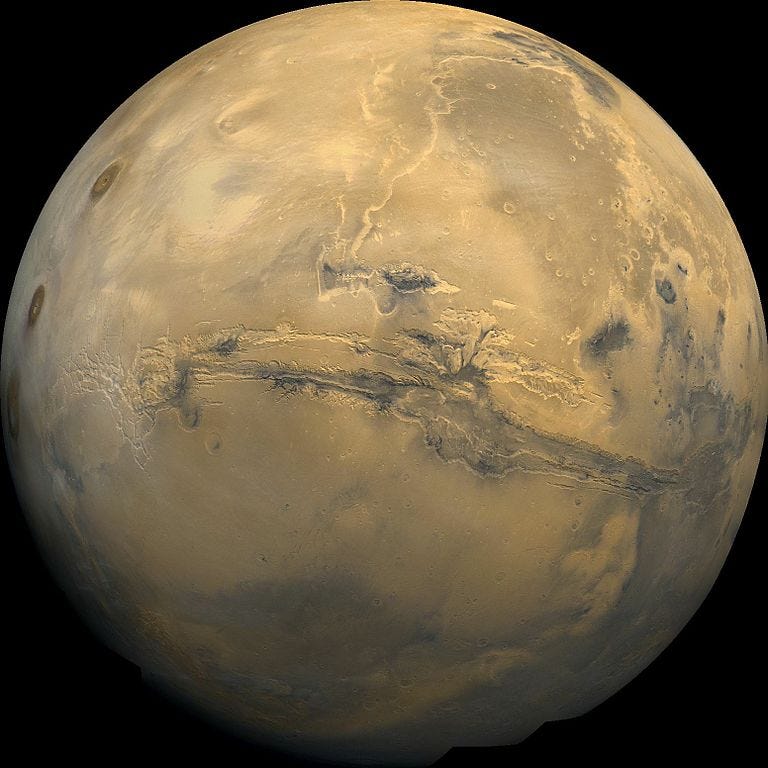The Challenges of Human Exploration to Mars Explained
Written on
Chapter 1: Understanding the Martian Challenge
The quest to send humans to Mars has sparked much interest, particularly in light of Elon Musk's ambitious plans. This article delves into the hurdles faced by Martian missions and the viability of these aspirations.
A recent experience prompted me to explore this topic. After being unexpectedly blocked by an individual—possibly due to sharing a link about the Zoo hypothesis on a related article—I felt compelled to address why reaching Mars is a formidable task. My blocked comment, which I am now using as a foundation for this piece, sought to clarify that while humans have yet to set foot on Mars, NASA has successfully landed several unmanned vehicles that have significantly increased our understanding of the planet. The latest, the Mars 2020 Perseverance Rover, even features a drill designed to investigate Martian soil for signs of ancient life.
The attempts by Russian and European space agencies to land on Mars have been met with failure due to the planet's thin atmosphere—about 1% the density of Earth's—and its relatively high gravity of 0.38 g. The Chinese have achieved success with their rover landing in early 2021, but historically, the Soviets were the first to land a vehicle on Mars, albeit briefly, with Mars 3 in 1971. As it stands, only the United States and China have operational rovers on Martian soil.
For now, let's dive deeper into the reasons why sending humans to Mars remains a daunting endeavor.
Section 1.1: The Distance Dilemma
One of the primary challenges is the sheer distance to Mars, which is significantly farther than the Moon and even further than Venus. Throughout the mission—beginning with the launch from Earth, landing on Mars, and returning—maintaining the safety of the crew is paramount.
This concern does not apply to robotic missions, which can fail without risking human lives. When unmanned missions experience issues—such as malfunctioning or crashing—the financial losses are considerable, but at least no lives are endangered.
Robotic rovers are immune to the physical and psychological stresses that human astronauts would face, such as developing health issues from ionizing radiation or feeling claustrophobic during extended periods in confined quarters. Therefore, a crewed mission to Mars would require a diverse team, ideally consisting of six individuals, each with specialized skills: a captain, a pilot, a medical doctor, a psychologist, a biologist (particularly in exobiology or astrobiology), and a geologist.
To mitigate risks, these roles should have redundancy; for instance, the psychologist should possess medical skills to step in if the doctor cannot perform their duties. This principle applies to all roles on the mission.
Subsection 1.1.1: Size and Safety Considerations

NASA has stringent protocols and safety measures in place for its missions, which would also apply to SpaceX should they collaborate. The psychological burden of the journey is significant, and the spacecraft must be equipped to handle various scenarios.
For example, it should include a radiation shield to protect astronauts from potential solar flares that could occur unexpectedly. Such flares may have little to no warning, and thus, the ship must be capable of detecting solar activity and allowing crew members to access a shielded area quickly.
Given that the entire spacecraft cannot be shielded due to weight limitations, similar concerns arise regarding Mars itself, which lacks a magnetic field to provide protection.
Section 1.2: The Toxic Martian Environment
Another challenge is the Martian regolith, which is not only fine and red but also toxic, posing risks to astronauts' suits and health. Fortunately, NASA is developing new spacesuits that incorporate technology to repel lunar dust, which may also be adapted to address the challenges presented by Martian soil.
Ultimately, while sending robotic missions to Mars is challenging, the task of safely landing humans on the planet presents an entirely different level of complexity. It is likely not impossible, but it is certainly not as straightforward as some may suggest.
Chapter 2: The Path Forward
The first video, "Why Is it So Difficult To Get To Mars?" provides insights into the specific challenges faced during Martian missions, from technology limitations to human factors.
The second video, "Can Humans Get to Mars Without Going Insane?" discusses the psychological aspects of long-duration space travel and the necessary preparations for astronauts.
In conclusion, while the vision of sending humans to Mars captivates many, the reality encompasses a multitude of challenges that require thorough preparation and innovative solutions.